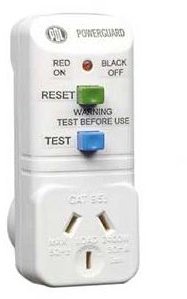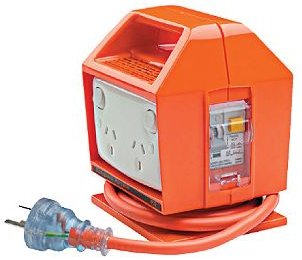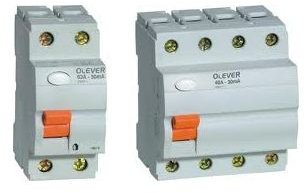Prevent Electric Shock Hazards By Using Residual Current Devices.
The increased use of electrical appliances and the concern of human safety have made it mandatory for the installation of RCD’s (residual current devices), which are also known as ground fault interrupters in the US and as trip switches in the UK. Using the principle of electromagnetism, this simple device saves many from electric shock hazards, and prevents fires and other related accidents.
How does this function?
Electricity is the flow of electrons. What enters a circuit also has to go out. The electric current in the phase wire – live wire has to be the same as the current in the neutral wire. When there is a ground fault, like somebody touching a live wire and conducting the electricity to the ground, the incoming and outgoing currents are different. This difference, although very small activates a relay that cuts off the power source.
In an RCD device, the incoming and outgoing circuit flow is directed through a toroid- a transformer core. In the normal case, since the current is the same in both coils the resulting magnetic field in the toroid is zero. If there is a difference in the incoming and outgoing current, there will be resultant magnetic field. This magnetic field induces a current in a separate coil on the toroid and activates a relay, which cuts off the main power input.
For safe operation, the RCD device should operate within 30-milli amps current difference, or the residual current. The same way the response time of the relay should be within 20 milli seconds. RCD’s are also find use in industrial applications to protect the equipment from earth faults. In such applications, the residual current ratings are higher. RCD’s are provided with a test button which when pressed simulates an earth fault and trips the circuit. This has to be checked once in a while to determine the correct functioning of the device.
The operation of the RCCB is different from the circuit breaker (CB or MCB). In the CB when the current increases above a certain limit, the relay acts and cuts off power supply. A short circuit leads to a very high current in the circuit resulting in fire and damages. The CB protects from this short circuit situation. Since the human being is a highly resistant species, touching a live wire does not produce the very high short circuit current required to trip a CB. However, that small current is sufficient to fatally trip the person. This is where the RCD device comes in and helps save lives.
Residual Current Circuit Breakers with Over current protection (RCBO’s) combine the function of the CB’ and the RCD’s. RCCB power outlets are mandatory in many applications. The 17th edition of IEEE regulations require widespread use of RCD’s.
Apart from domestic and building wiring, in the construction industry where a lot of temporary wiring and hand tools are used, RCDs are effectively used.


However, one should always keep in mind RCD’s are man made devices that can fail at any time. This is only a secondary protection. The first level is always a good ground connection and safe operating practices.
Reference
https://www.westernautomation.com/DemystifyingRCDs.htm
Images courtesy https://www.testandtagsupplies.com.au
